Borneo's literal high point, for naturalists and everybody else, is Mount Kinabalu in Sabah. I first saw it in 1992, long before I met Eileen, and I never really thought I would see it again. Fortunately, I was wrong - although I have never scaled it (heights and I don't get along) I have returned a number of times. On February 5, 2014, I went there again, this time on a day trip with the specific aim of introducing my young friend Hezekiah Asim, a Sarawak pastor and ethnomusicologist, to the joys of birding. I could hardly have picked a better place.
I was in the state for a few days to deliver a talk on the ivory and rhino horn trade to the Sabah Society. Hezekiah, who recently moved to Kota Kinabalu (KK to its friends) and not only put me up but provided transportation for our excursions - he claimed to enjoy himself thoroughly, but I owe him a big 'thank you' all the same.
Our trip took place, of course, months before the devastating earthquake that rocked the mountain and toppled one of the famous "donkey ears" at its summit. This photograph, therefore, is something of a valedictory.
I certainly don't have to say this for Hezekiah, given his religious profession, but on my own behalf I had better assure my readers that I remained fully clothed throughout our day on the mountain.
Although we checked out a few of the trails, including the Silau Silau, we confined most of our birding (and, as it turned out, mammal-watching) to the road leading from the park headquarters up to the power station and Timpohon Gate, the jumping-off point for aspiring climbers.
Sunda Laughingthrushes are quite sober-looking as laughingthrushes go, but every bit as inquisitive and personality-laden as their cousins (for those unfortunate enough to live where there aren't any, laughingthrushes a're rather like jays).
The birds were looking for handouts from the many visitors crowding the platform, and so were two species of mammal. Mountain Treeshrews (Tupaia montana) are highland representatives of the peculiarly Southeast Asian Order Scandentia, apparently cousins of our own order, the Primates, and the even more peculiar Southeast Asian colugos or "flying lemurs" (Dermaptera). If they look rather like long-nosed squirrels to you, well, the Malay word tupai that gives them their scientific name actually means 'squirrel'. So you're not alone.
Borneo is particularly rich in real squirrels. The common species at the Timpohon platform, eagerly looking for bits of bread from visitors, is the Bornean Black-banded Squirrel (Callosciurus orestes), a local endemic of the northeastern Bornean high country.
Not every Bornean squirrel is easy to see well, but these animals were as habituated to humans as the Grey Squirrels (Sciurus carolinensis) in a Toronto city park. This made them wonderful to watch and photograph, but what the handouts they were getting were doing to their overall nutrition I dread to think.
Here is one in what I presume is a more natural pose. A number of Bornean squirrels seem to spend a lot of time exploring tree bark, presumably for sap or, perhaps fungi, but the diet of this species is recorded as being insects and fruit (neither of which this individual seems to be turning up).
Feeding wild animals like this may be deplorable, but for Malaysians (and tourists) the chance to get on close terms with Bornean wildlife (and to enjoy the process) comes surprisingly rarely. As we watched these girls trying to make friends with the squirrels, however bad that may be for the animals' health, it was is hard not to find it heartwarming.
One of the chief glories of Kinabalu (and one I have written about before) is its flora. A very high proportion of it is endemic to the mountain, but this Dhobi Tree (Mussaenda frondosa) is native to much of South and Southeast Asia.
We were here, however, to watch birds. Any birder visiting Kinabalu will be repeatedly serenaded by the undulating whistled glissando of the Sunda Bush-warbler (Cettia vulcania oreophila), but seeing the bird requires a bit of work. In our case that included a brief bit of tape-playing. It brought this bird charging at us out of the undergrowth.
He stayed around us for some time, letting us know in no uncertain terms what he thought of our intrusion.
This Bornean Whistler (Pachycephala hypoxantha), a gently beautiful bird, was more circumspect, keeping a wary eye on us from the shrubbery (no taping required).
An altogether more garish creature, the Bornean Green Magpie (Cissa jefferyi) has only recently been recognized as a species on its own. A noisy gang passed over our heads, moving quickly through the canopy as I raced along trying to get a photograph or two.
We were here, however, to watch birds. Any birder visiting Kinabalu will be repeatedly serenaded by the undulating whistled glissando of the Sunda Bush-warbler (Cettia vulcania oreophila), but seeing the bird requires a bit of work. In our case that included a brief bit of tape-playing. It brought this bird charging at us out of the undergrowth.
He stayed around us for some time, letting us know in no uncertain terms what he thought of our intrusion.
This Bornean Whistler (Pachycephala hypoxantha), a gently beautiful bird, was more circumspect, keeping a wary eye on us from the shrubbery (no taping required).
An altogether more garish creature, the Bornean Green Magpie (Cissa jefferyi) has only recently been recognized as a species on its own. A noisy gang passed over our heads, moving quickly through the canopy as I raced along trying to get a photograph or two.
Another recently-recognized split from a continental species, the Chestnut-hooded Laughingthrush (Rhinocichla treacheri) is common and fairly easy to see on the mountain.
The Sunda Laughingthrush (Garrulax palliatus) is less obvious, unless you go up to the viewing platform above Timpohon Gate. We spent quite a bit of time up there, not just for the birds but for the mammals.
The Sunda Laughingthrush (Garrulax palliatus) is less obvious, unless you go up to the viewing platform above Timpohon Gate. We spent quite a bit of time up there, not just for the birds but for the mammals.
Sunda Laughingthrushes are quite sober-looking as laughingthrushes go, but every bit as inquisitive and personality-laden as their cousins (for those unfortunate enough to live where there aren't any, laughingthrushes a're rather like jays).
The birds were looking for handouts from the many visitors crowding the platform, and so were two species of mammal. Mountain Treeshrews (Tupaia montana) are highland representatives of the peculiarly Southeast Asian Order Scandentia, apparently cousins of our own order, the Primates, and the even more peculiar Southeast Asian colugos or "flying lemurs" (Dermaptera). If they look rather like long-nosed squirrels to you, well, the Malay word tupai that gives them their scientific name actually means 'squirrel'. So you're not alone.
Borneo is particularly rich in real squirrels. The common species at the Timpohon platform, eagerly looking for bits of bread from visitors, is the Bornean Black-banded Squirrel (Callosciurus orestes), a local endemic of the northeastern Bornean high country.
Not every Bornean squirrel is easy to see well, but these animals were as habituated to humans as the Grey Squirrels (Sciurus carolinensis) in a Toronto city park. This made them wonderful to watch and photograph, but what the handouts they were getting were doing to their overall nutrition I dread to think.
Here is one in what I presume is a more natural pose. A number of Bornean squirrels seem to spend a lot of time exploring tree bark, presumably for sap or, perhaps fungi, but the diet of this species is recorded as being insects and fruit (neither of which this individual seems to be turning up).
Feeding wild animals like this may be deplorable, but for Malaysians (and tourists) the chance to get on close terms with Bornean wildlife (and to enjoy the process) comes surprisingly rarely. As we watched these girls trying to make friends with the squirrels, however bad that may be for the animals' health, it was is hard not to find it heartwarming.










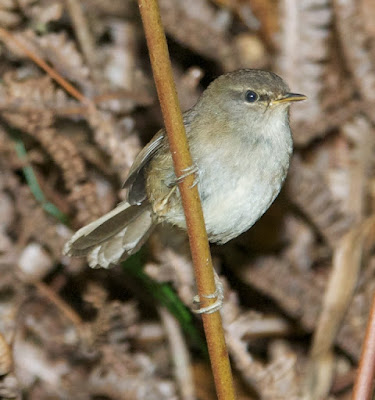



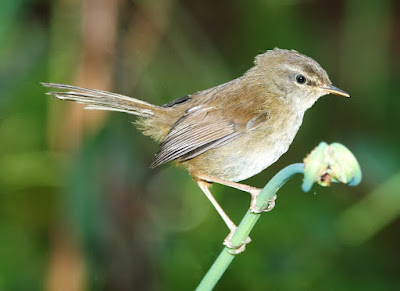
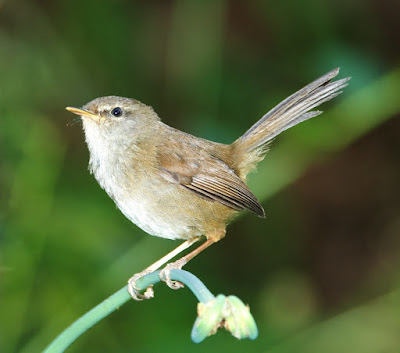



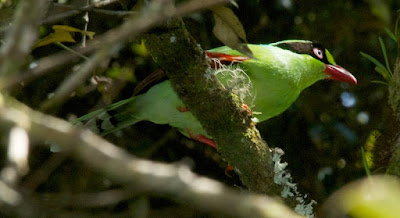
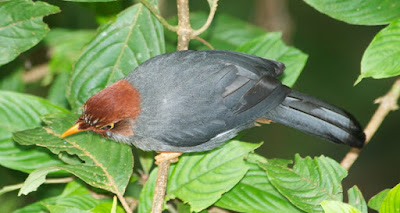




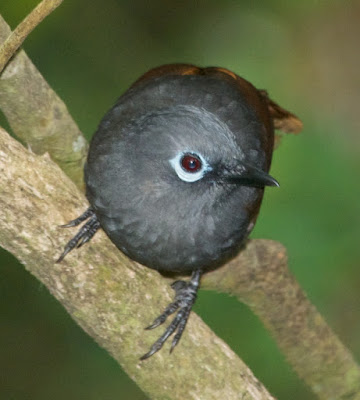


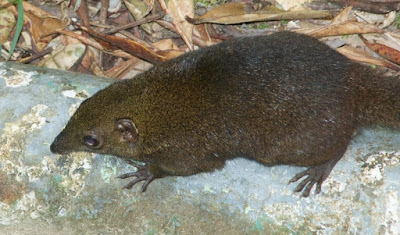
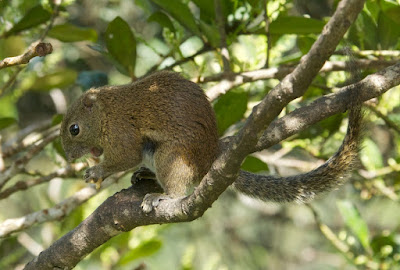


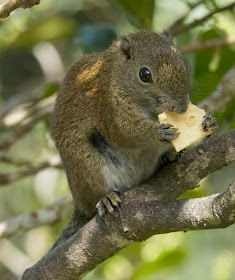





No comments:
Post a Comment